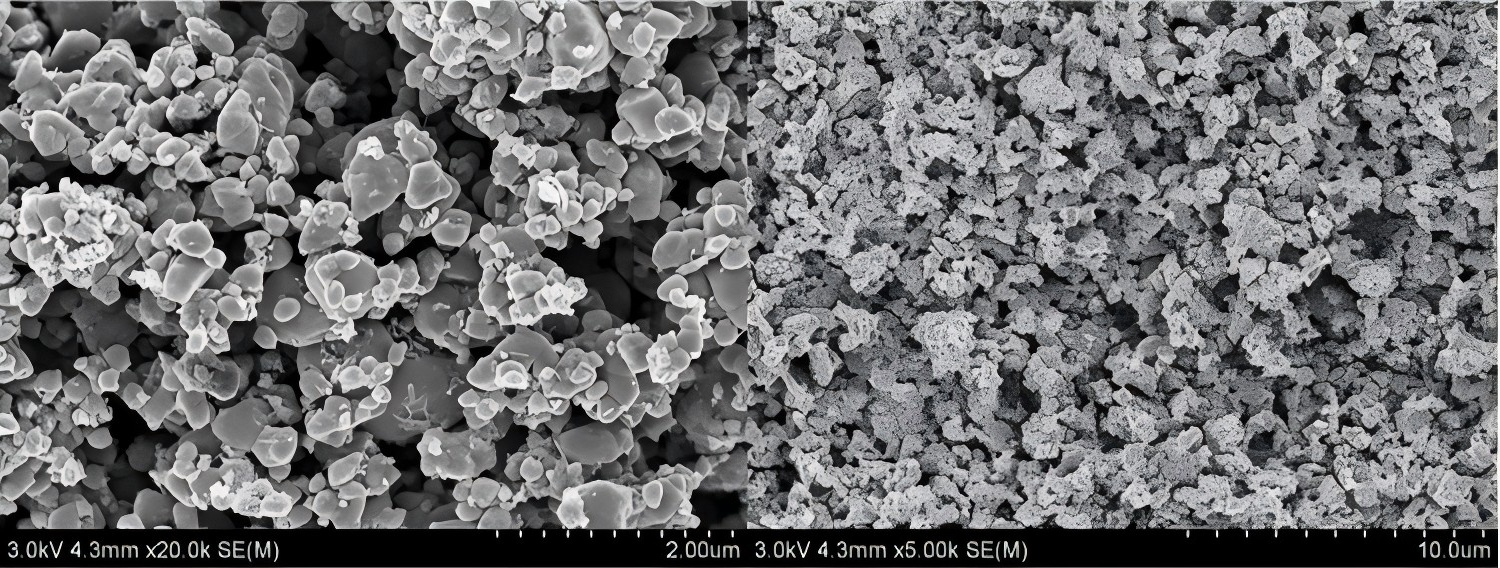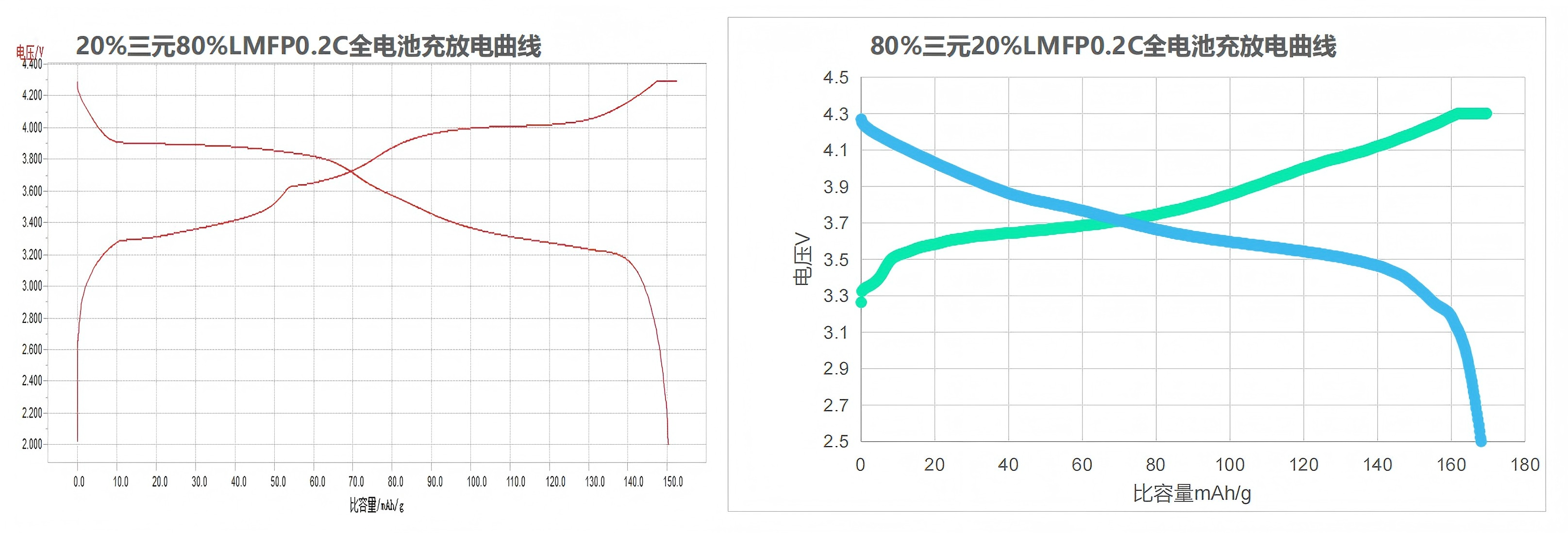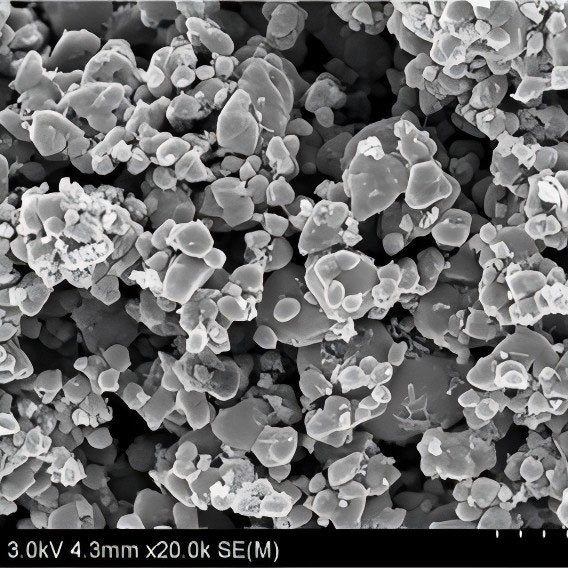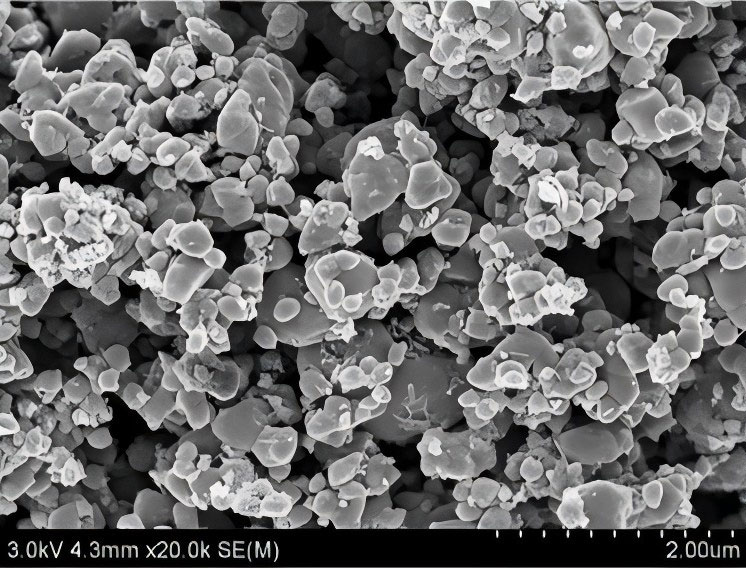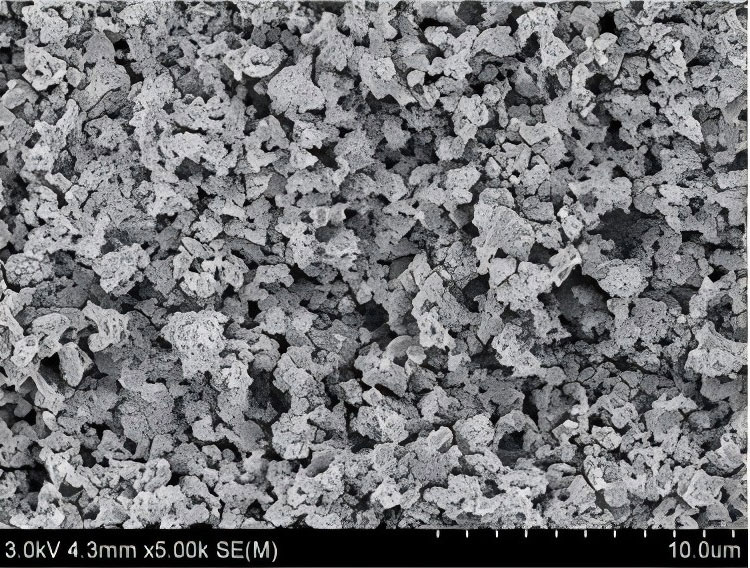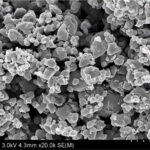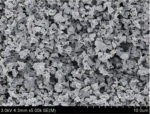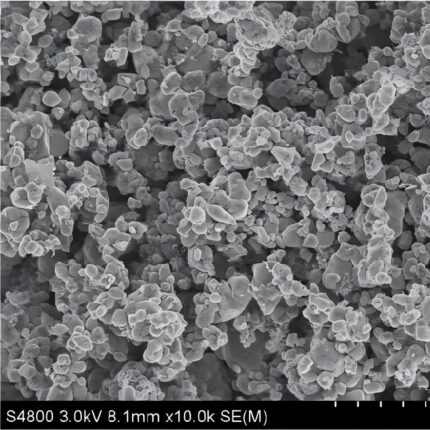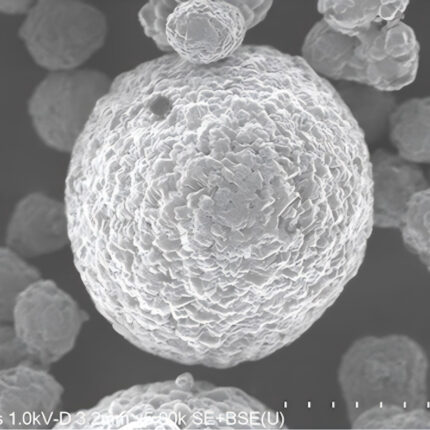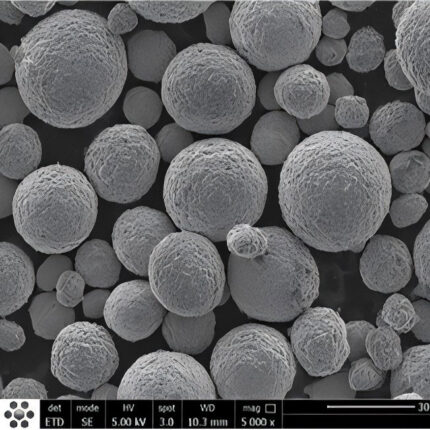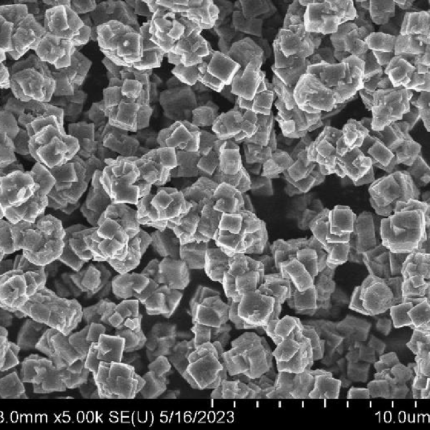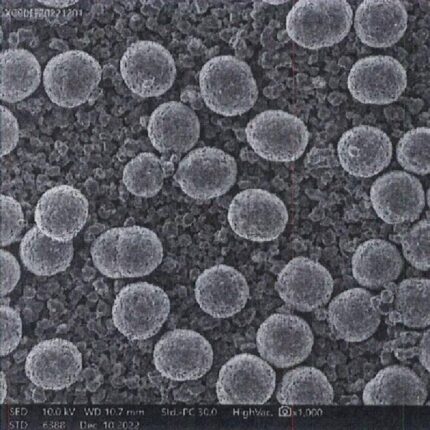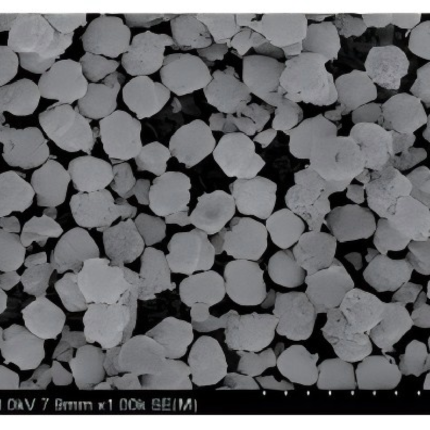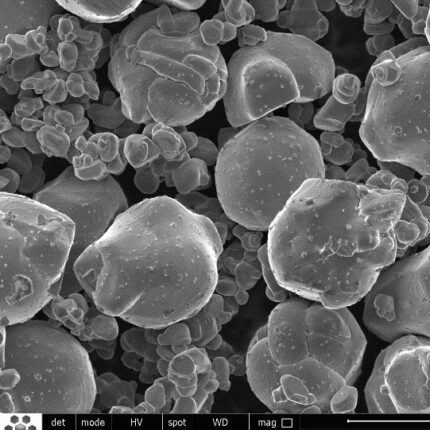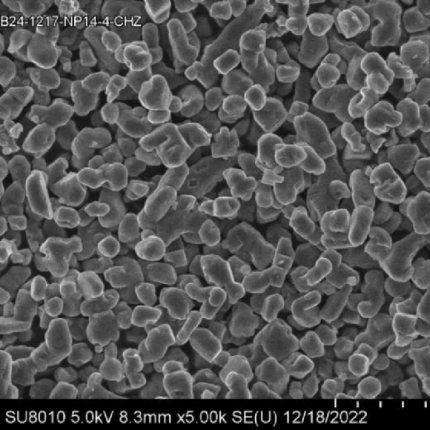| Elcmcnts | Unit | Test value | Test Method and equipment |
|---|---|---|---|
| Li | % | 4.5 | ICP-OES test |
| Mn | % | 22.1 | |
| Fe | % | 10.8 | |
| P | % | 19.1 | |
| 0.1C first discharge capacity | mAh/g | 145.71 | Electrochemical testing system; Voltage range:2.0- 4.3V;CC/CV |
| 0.1C first discharge efficiency | % | 96.85 | |
| PH | / | 9.2 | 10% suspension; Leici PHS- 3E pH meter |
| Carbon C | % | 1.50 | High Frequency Infrared Carbon and Sulfur Analyzer CS Method NJ-HW868A |
| Tap Density | g/cm³ | 1 | Tap Density Method: TD-02 |
| Specific surface area BET | m²/g | 15.5 | BET comparison method |
| Particle size distribution | μm | D10:0.274 | Laser diffraction method; Particle refractiveindex 1.74; Particle absorption rate 1; Dispersant: water; Dispersant refractive index: 1.33; Topsizer Laser Particle Size Analyzer |
| D50:0.962 | |||
| D90:15.885 | |||
| Dmax:28.73 | |||
| Moisture | ppm | 475.2 | Karl Fischer Coulomb method; AKF-CH6 |
